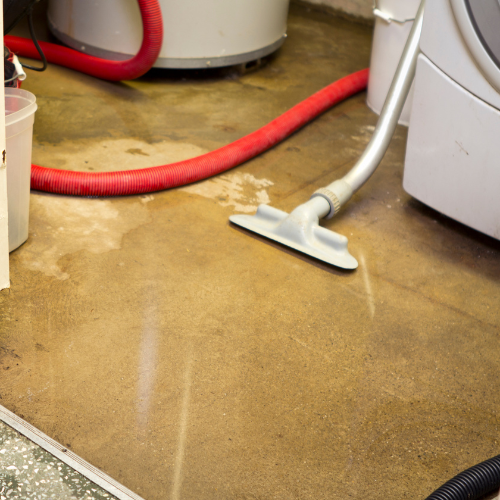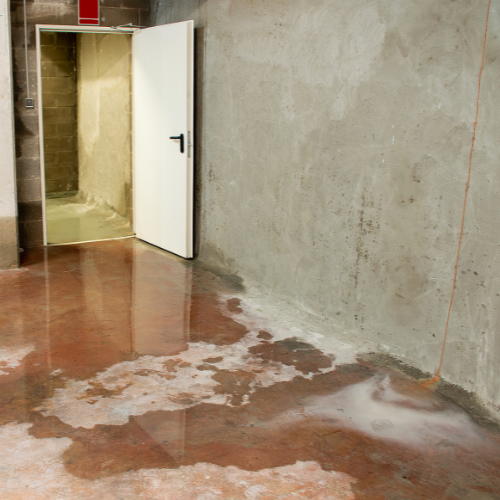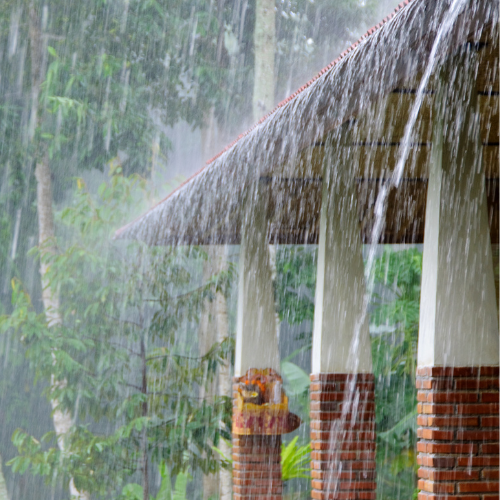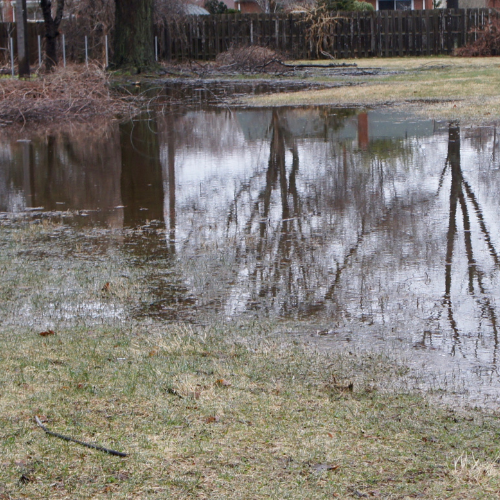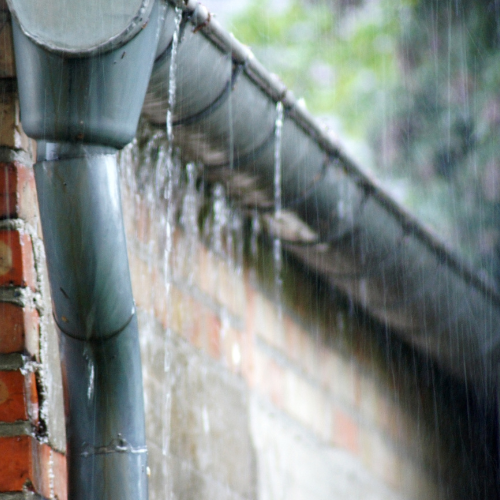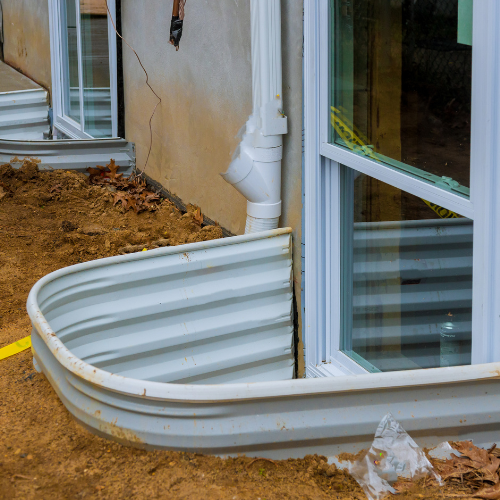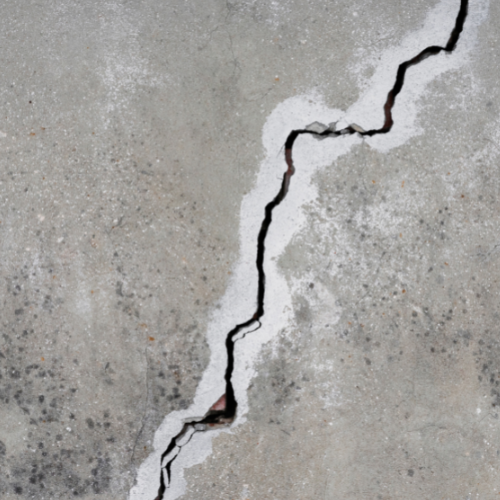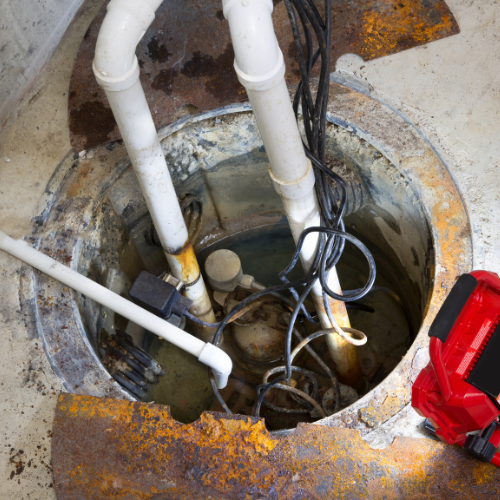The Complete Guide
to Basement Waterproofing
Everything you Need to Know
Your basement is full of potential! You can add a family den, a spare bedroom, or an entertainment center. You can even use it for storage. But you can't do any of these things if your basement is wet! Basement water means you can't use an entire floor of your home; however, basement waterproofing is the solution.
Unfortunately, waterproofing your basement can seem overwhelming, so we are creating the complete guide to basement waterproofing, answering every question you have about waterproofing. You will learn how you can keep your basement permanently safe and dry.
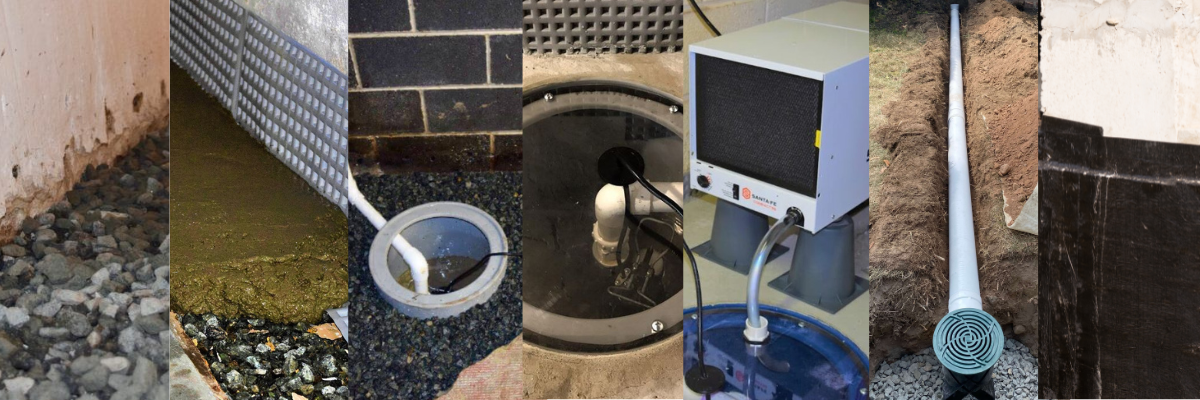
Chapter 1: Why is There Water in My Basement?
Before jumping straight to the waterproofing process, you first need to understand how water gets into your basement. Once you know where basement water comes from, you will better understand how basement waterproofing keeps it out.
Moisture in Basements is Common
If you have a wet basement, you are not alone. According to the American Society of Home Inspectors, over 60 percent of basements have a moisture problem. This percentage is higher in older homes, as many were built with old-school, ineffective waterproofing methods.
But even with new homes, inexperienced contractors fail to properly waterproof foundations. As a result, most new homes will develop a basement water leak within ten to fifteen years!
Thankfully, your wet basement problems can be fixed. A properly installed basement waterproofing solution can keep your basement nice and dry permanently.
Symptoms of Basement Water Problems
If you already have water pooling on your basement floor, you need to call Blue Umbrella Waterproofing immediately so we can fix the problem before it causes any severe damage. If instead, you are worried about basement moisture but aren't sure if you have any yet, there are critical early warning signs that you can keep an eye out for. Symptoms that you have a growing basement moisture problem include
- Mold growth or the smell of mildew in your basement
- Rotting wood on the floor, walls, or on furniture in your basement
- Buckling or sagging in the floors above your basement
- Lifting or uneven tiles in the floors above your basement
- Rust on nails or screws in the basement walls
- Rust on the bottom of metal appliances in your basement
If you have any of these issues, you can chat with one of Blue Umbrella's basement specialists to check if you have anything to worry about. Each of these issues indicates water in your basement, but the question remains, where is the water coming from?
Sources of Basement Water
Basement water comes from a few different places, including interior sources, the concrete of your foundation, humid outside air, and, most commonly, rainwater. Let's break down each of these in turn.
Interior Moisture Sources
Interior basement moisture issues include humidifiers or unvented dryers. While these machines won't create a puddle on the floor, they create a warm, humid basement where mold will grow, and rot will occur. Additionally, if your basement is finished and has a shower or cooking area, that can also cause moisture buildup in your basement.
Your Concrete Foundation
If you live in a new home, there is moisture in your concrete foundation. Concrete is porous, and even though the moisture near the surface evaporates as the concrete cures, additional moisture is trapped within the concrete. Over time, the trapped moisture can make its way up through the concrete and into your basement!
Humid, Outside Air
Leaky or open basement windows can be an issue. Humid outside air that passes through your basement windows brings moisture that will leave condensation on your basement floors or walls. Make sure your basement windows remain tightly closed.
Rain & Groundwater
But, of all the sources of basement water, the most common and problematic source of basement water is rain and groundwater that makes its way into your home. Rain and groundwater sneak into your basement because of hydrostatic pressure and the clay bowl effect.
Interior Moisture Sources
Interior basement moisture issues include humidifiers or unvented dryers. While these machines won't create a puddle on the floor, they create a warm, humid basement where mold will grow, and rot will occur. Additionally, if your basement is finished and has a shower or cooking area, that can also cause moisture buildup in your basement.
Your Concrete Foundation
If you live in a new home, there is moisture in your concrete foundation. Concrete is porous, and even though the moisture near the surface evaporates as the concrete cures, additional moisture is trapped within the concrete. Over time, the trapped moisture can make its way up through the concrete and into your basement!
Humid, Outside Air
Leaky or open basement windows can be an issue. Humid outside air that passes through your basement windows brings moisture that will leave condensation on your basement floors or walls. Make sure your basement windows remain tightly closed.
Rain & Groundwater
But, of all the sources of basement water, the most common and problematic source of basement water is rain and groundwater that makes its way into your home. Rain and groundwater sneak into your basement because of hydrostatic pressure and the clay bowl effect.
The Clay Bowl Effect & Hydrostatic Pressure
The unfortunate combination of the clay bowl effect collecting water around your foundation and hydrostatic pressure causing the water to seep through your foundation are what allow rain and groundwater to get into your basement.
What is the Clay Bowl Effect?
Over time, as soil sits, it becomes denser. When your home was built, this dense soil was dug out of the ground, creating a large hole where your home's foundation and the basement were built. After your basement was finished, any extra space outside your foundation walls was filled with some of the dug-up soil. But this dug-up soil, called backfill, is looser and more porous than the original dense soil. So when it rains, the rainwater seeps into the porous soil and not into the more dense soil! This means the water seeps into the ground surrounding your home's foundation, up against your basement walls, creating the "clay bowl effect." Now, this wouldn't be too much of a problem if it weren't for hydrostatic pressure.
What is Hydrostatic Pressure?
Hydrostatic pressure simply means that water is heavy and pushes outwards in all directions. As water seeps into the soil around your foundation (the clay bowl effect), the hydrostatic pressure builds up as the water looks for someplace to go. As the water presses up against your foundation, it makes its way into any small cracks it can find, or even forms new ones, and eventually seeps into your basement!
Why is Rainwater Getting Into My Basement?
The Clay Bowl effect and hydrostatic pressure can be enough for water to get into your basement, but there are also other issues that can make the problem even worse. Here are some to watch out for.
Poorly Graded Soil
Grading is the slope of the soil around your basement. Correctly graded soil slopes away from your home and other buildings, so any water travels downward away from your basement. But, if the yard around your home's foundation isn't graded properly, the water may be collecting around your home’s foundation. The collected water will seep into the ground and, due to hydrostatic pressure, eventually through your foundation walls and into your basement!
Missing or Improperly Installed Rain Gutters
Just like grading your soil directs water away from your foundation, rain gutters do the same. Well, at least they should. Correctly installed gutters collect rainfall and transport it away from your home via a downspout and drainage system. But poorly installed gutters dump the water straight down into the soil surrounding your basement, which, you guessed it, eventually ends up in your basement. If you don't have any gutters, the rain drips from your roof directly onto the soil around your foundation, leading to the same outcome, a wet basement.
Poorly Installed Window Wells and Covers
If you have basement windows, especially egress windows, you need to make sure that they are sealed when not in use. Unsealed or poorly installed basement windows leave cracks for water to leak in from the outside, getting your basement wet.
Basement Floor and Wall Cracks
As the water in the soil presses up against your home's foundation, it searches for any entry. Unfortunately, cracks in your basement walls or floors are exactly what it's looking for. The water squeezes through these cracks, forcing its way into your basement.
A Failing Waterproofing System
A poorly installed or maintained basement waterproofing system can lead to basement water. If your basement waterproofing system was improperly installed, it won't function properly and will fail to remove basement water. Additionally, properly installed but poorly maintained waterproofing systems can fail as the sump pump wears out or french drains clog, resulting in your basement getting wet.
Poorly Graded Soil
Grading is the slope of the soil around your basement. Correctly graded soil slopes away from your home and other buildings, so any water travels downward away from your basement. But, if the yard around your home's foundation isn't graded properly, the water may be collecting around your home’s foundation. The collected water will seep into the ground and, due to hydrostatic pressure, eventually through your foundation walls and into your basement!
Missing or Improperly Installed Rain Gutters
Just like grading your soil directs water away from your foundation, rain gutters do the same. Well, at least they should. Correctly installed gutters collect rainfall and transport it away from your home via a downspout and drainage system. But poorly installed gutters dump the water straight down into the soil surrounding your basement, which, you guessed it, eventually ends up in your basement. If you don't have any gutters, the rain drips from your roof directly onto the soil around your foundation, leading to the same outcome, a wet basement.
Poorly Installed Window Wells and Covers
If you have basement windows, especially egress windows, you need to make sure that they are sealed when not in use. Unsealed or poorly installed basement windows leave cracks for water to leak in from the outside, getting your basement wet.
Basement Floor and Wall Cracks
As the water in the soil presses up against your home's foundation, it searches for any entry. Unfortunately, cracks in your basement walls or floors are exactly what it's looking for. The water squeezes through these cracks, forcing its way into your basement.
A Failing Waterproofing System
A poorly installed or maintained basement waterproofing system can lead to basement water. If your basement waterproofing system was improperly installed, it won't function properly and will fail to remove basement water. Additionally, properly installed but poorly maintained waterproofing systems can fail as the sump pump wears out or french drains clog, resulting in your basement getting wet.
You Have a Wet Basement, But Do You Need Waterproofing?
That pretty much covers why your basement might be getting wet. While wet basements are common, there are solutions, like basement waterproofing systems installed by Blue Umbrella. But before we get to basement waterproofing, the next big question is, why does it matter if you have a wet basement? Why do you need basement waterproofing? The answer will be covered in the next chapter.
Chapter 2: Why Is Basement Water a Problem and Do I Need Waterproofing?
It can be easy to overlook your basement, especially if it’s unfinished. But it’s important to know what’s happening down below. The state of your basement impacts everyone in your home—and in this chapter, we’re going to explain how.
A happy basement is a dry basement. When water and moisture seep into the basement, this is when you’ll start to have problems. The severity of these problems depends on how long you wait to address and treat the issue. In the worst-case scenario, basement water problems can eventually cause the home’s foundation to collapse.
It would take a great deal of time and neglect for this to occur. But the point we’re trying to make is that the sooner you take action to remove the moisture in your basement, the less you’ll have to end up paying in the form of money, time, and stress.
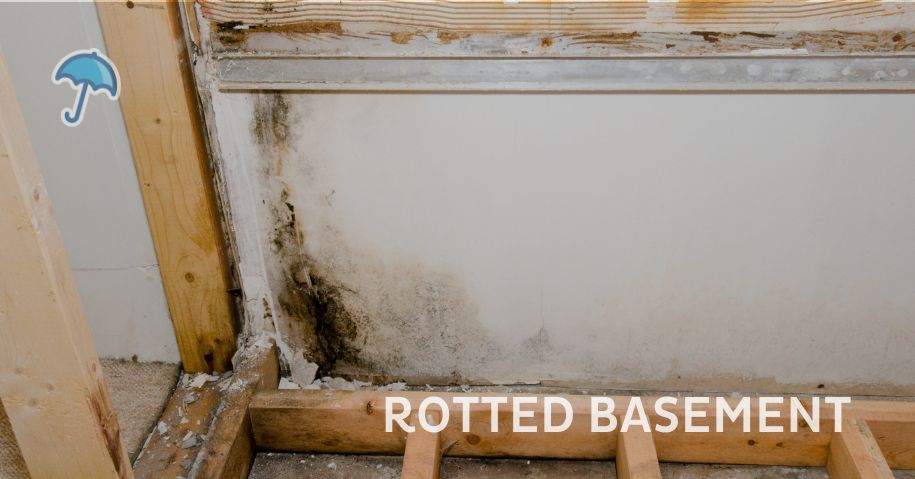
Rot & Structural Damage
There’s a reason why wood has been used as a building material for thousands of years. It’s very sturdy and can flex without breaking. It’s also low-cost compared to other materials. But wood is also organic matter, which means that under the right circumstances, it can fall victim to mold.
In order to survive, mold needs organic materials, air and moisture. We can’t change the fact that our homes are made of wood, and we certainly can’t change the fact that we need air in our homes. The third element—and the one that we can control to prevent mold—is moisture.
When moisture seeps into the basement through wall cracks, floor cracks, poorly sealed windows, or another entry point, the basement becomes a breeding ground for mold. Since wood is porous and can absorb a great deal of moisture, you’ll likely see mold on wooden surfaces.
It can grow on the wood near the windows and doors, floor joists, and even wooden furniture. The mold will eventually cause the wood to rot, changing the wood from sturdy to weak and breakable.
Damaged Property & Valuables
Many NJ basements become storage space. This isn’t a problem as long as your basement is dry and moisture-free. But when water seeps in, it can damage and even ruin your valuables. Things like photo albums, home videos, and family heirlooms are irreplaceable, which is why it’s important to store them in a safe and dry area.
Water can be seeping into the basement and you don’t even realize it. That is until you go to move some boxes and realize they’re surrounded by standing water.
Water in the basement can also damage drywall, building materials, appliances, HVAC furnace units, and water heaters. When mold grows on drywall it causes it to deteriorate. Not to mention the mold spores that will become airborne and contaminate your indoor air.
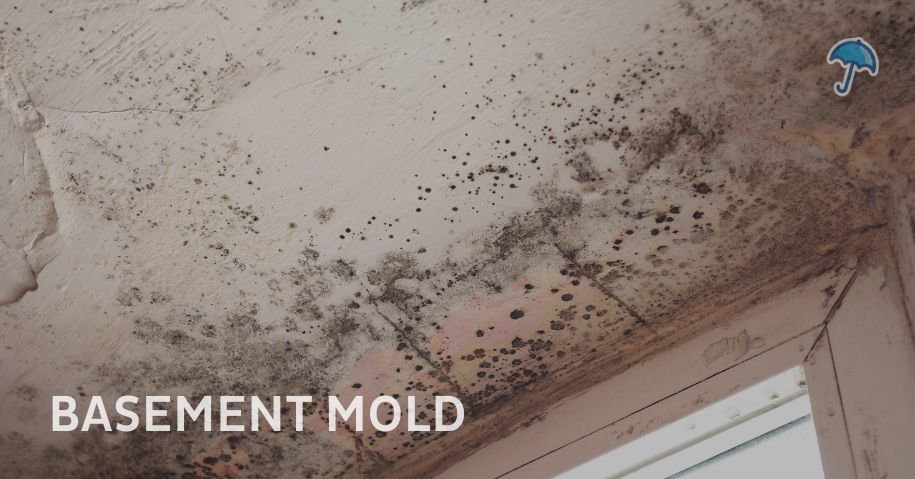
Basement Water = Mold
As we said earlier, water and humidity in the basement create an open invitation for mold to grow.
In addition to damaging our homes, mold is dangerous to our health. Once mold has the chance to grow, it releases thousands of mold spores that will become airborne. Many people are allergic to mold spores, which explains why mold can cause sneezing, itchy eyes, sinus issues, and more. But even if you aren’t allergic to mold spores, mold contains toxins that are dangerous for anyone to breathe in.
A common misconception is that if the mold is in your basement and you never spend time in the basement, you’re in the clear. This is false. Outdoor air enters our homes through the lower level (the basement) and exits through the upper level (the attic) through a phenomenon known as the stack effect.
This upward movement of air means that the air you’re currently breathing comes from the lower level. In other words, you are always breathing in whatever is in your basement—good or bad.
Mold is especially dangerous for anyone with asthma or existing upper respiratory conditions. There is even evidence that indoor mold can contribute to the development of asthma. This is why it’s so important to get rid of mold as soon as you see it and treat whatever caused the mold to grow in the first place.
Mold can also create musty smells. So, on top of having mold that’s dangerous to our homes and our health, it smells bad, too. Needless to say, there’s nothing good that comes from mold in the basement or anywhere else in your home (unless you have some blue cheese in your fridge—that’s the one exception!).

A Playground for Pests & Bacteria
Basement water attracts more than just mold. Dust mites, bacteria, and other allergens grow and reproduce in humid environments. And if that’s not enough, rodents look for leaky basements as a water source.
Rodents not only carry germs and diseases (which they will also leave behind through their fecal matter), but they can wreak havoc on your home as well. They are notorious for chewing through walls, clothes, wooden furniture, and more.
Many people think that basements and nasty things like mold, dust, and even pests go hand-in-hand. But the truth is that basement moisture is what causes these issues. When you remove the water, you fix the issues.
Higher Heating & Cooling Bills
Out of all 50 states, New Jersey is the third most expensive state to live in. We all love our pizza, garden tomatoes, and days down the shore. But there’s no denying that this is an expensive state to live in. And if you’ve been looking for ways to lower your living expenses, you might want to take a look in the basement.
Basement water raises the humidity levels in the home. And because humid air holds more heat, you’ll always feel warmer in humid conditions. Imagine two homes that are set to 75 degrees. The first home’s humidity levels are within the appropriate 30-50% range, and the other home is 75% humidity. The air conditioner in the second home is going to have to work harder to make up for that excess humidity.
This is especially important as your heating and cooling can cost you thousands of dollars a year. The average energy consumption (127 million Btu per year) in New Jersey homes and average household energy expenditures ($3,065 per year) are among the highest in the country.
As a result, the second homeowner is going to pay more each month to cool their home than the first homeowner, even though the indoor temperature is the same. When we think of basement water problems, higher energy costs might not be the first thing that comes to mind. But this is just another way that water in the basement can impact your long-term finances and quality of life.
Do I Need Basement Waterproofing?
If you have water or moisture in your basement, this isn’t something you should just accept or put up with. Basements are not meant to be wet, humid environments. With today’s technology and waterproofing systems, there is simply no reason to live with a leaky basement. It does nothing but have a negative impact on our homes, our finances, and our health.
Another important point to consider is that basement water can seriously diminish your home’s value. If you put your home on the market, potential buyers will be hyperaware and look for signs of water damage such as water stains, musty smells, cracks in the ceiling and walls, and more.
On the flip side, waterproofing your basement can result in a 30% ROI. The basement plays a huge role in the overall health of your home. A waterproofed basement provides peace of mind for potential buyers, thus increasing the resale value of your home.
Blue Umbrella Is the Permanent Solution for Basement Water
When it comes to basement waterproofing, not all services and solutions are created equal. In order to keep your basement reliably dry, you need to work with a licensed, reputable waterproofing company that uses the right products and offers a lifetime warranty.
These are the companies that will dive deep and correct the root issue of your basement water problems.
At Blue Umbrella, we stand behind our work with a transferable lifetime warranty. As important as it is to waterproof a leaky basement, we know that this is an investment. That’s why we take every measure to ensure that when you waterproof your basement with us once, you’ll never have to worry about it again.
Ready to Waterproof Your Basement?
Keep your NJ home protected by contacting us today to schedule a free basement inspection.
Subscribe to our newsletter for the latest tips, tools & news!
Blue Umbrella Waterproofing Proudly Serves These Areas
For more information about basement waterproofing services or to find out if Blue Umbrella serves your area, see our complete service area.


